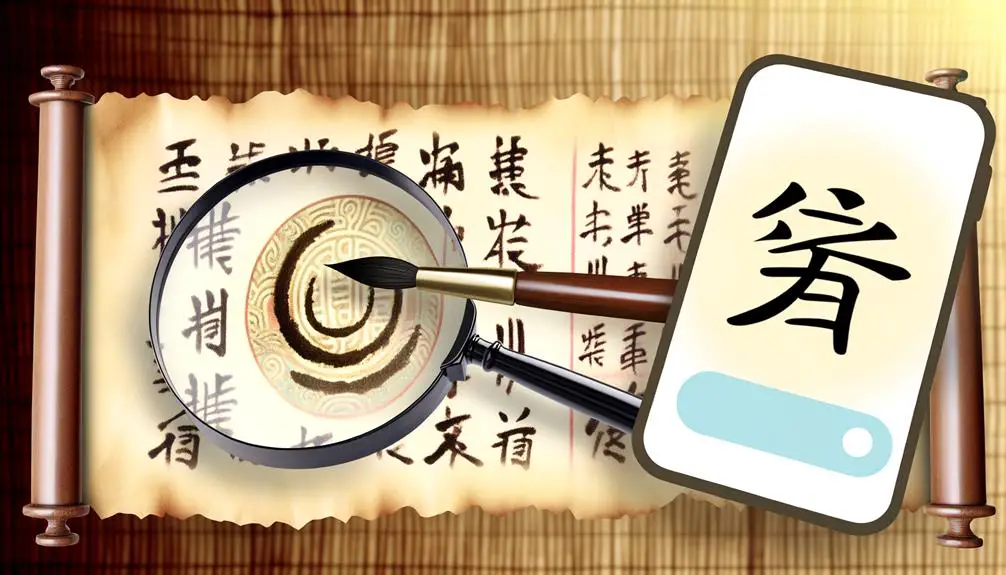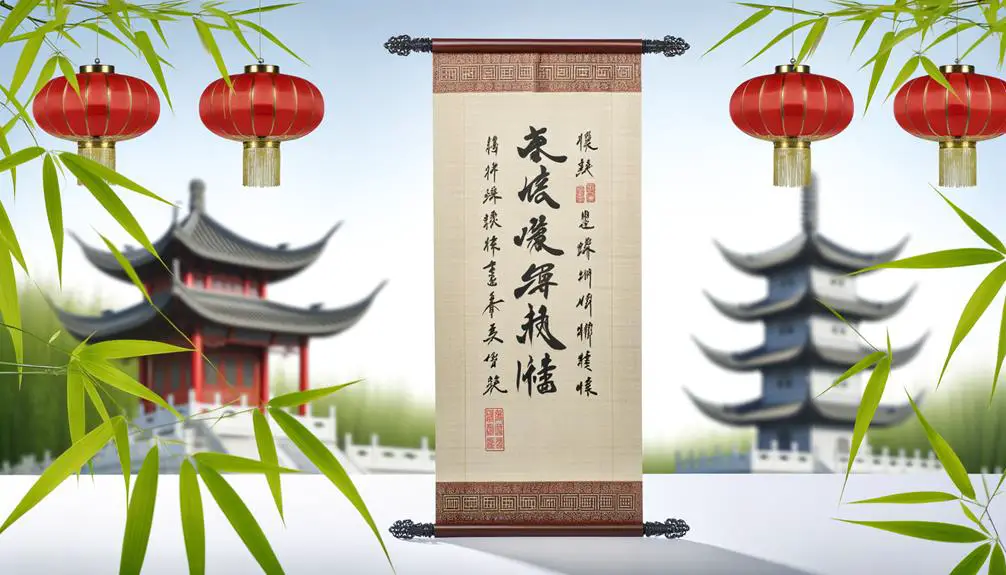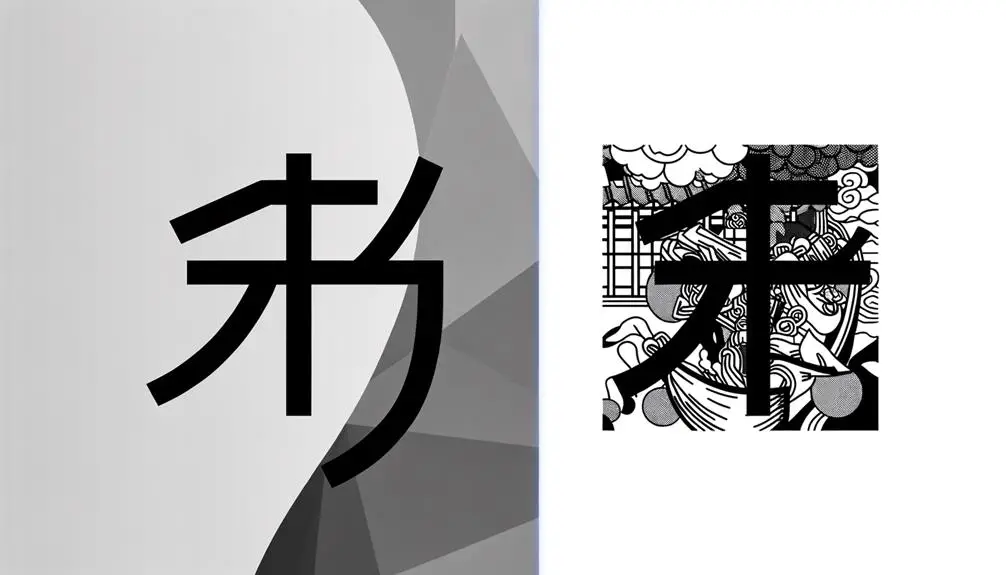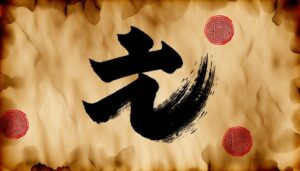Essential Tools for Chinese Symbol Translation into English
Translating Chinese symbols into English requires extensive knowledge of their historical development and linguistic structure. Chinese characters have evolved from ancient pictographs to a complex logographic system.
They are categorized into Simplified and Traditional forms, each conveying unique cultural and historical subtleties. Precise translation requires comprehension of phonetic and semantic components, cultural backgrounds, and idiomatic phrases.
Simplified characters simplify learning but might conceal traditional symbolic meanings. Translators must navigate these intricacies with cultural awareness and linguistic accuracy.
Grasping the deeper complexities of Chinese symbols can enhance the translation process and guarantee more precise interpretations.

Key Takeaways
- Understand the cultural and historical context of Chinese characters for accurate translation.
- Utilize bilingual dictionaries and cultural databases to ensure precise meaning.
- Recognize differences between Simplified and Traditional characters and their implications.
- Employ machine translation systems for initial drafts, refined with human expertise.
- Consult native speakers or experts for contextual and idiomatic accuracy.
History of Chinese Characters

The history of Chinese characters dates back over three millennia, evolving from ancient pictographs to the complex logographic system used today. Originating during the Shang Dynasty, the earliest forms, known as Oracle Bone Script, were etched onto animal bones and turtle shells for divination purposes.
As Chinese society developed, so did its writing system, progressing through various stages such as the Bronze Script and Seal Script, each adding layers of complexity and standardization. By the Han Dynasty, the Clerical Script emerged, laying the groundwork for modern written Chinese.
This evolution reflects not only the linguistic ingenuity of the Chinese civilization but also its cultural and historical continuity, providing a window into ancient rituals, administration, and artistic expression.
Types of Chinese Symbols
The landscape of Chinese symbols encompasses both Simplified and Traditional characters, each with unique historical and cultural significance.
Moreover, Chinese characters can be categorized into pictographic and ideographic symbols, reflecting their origins and functions in conveying meaning.
Additionally, many characters incorporate phonetic components, which play an essential role in understanding pronunciation and translation.
Simplified Vs. Traditional Characters
Understanding the distinction between simplified and traditional Chinese characters is essential for accurate translation and cultural comprehension.
Simplified characters, introduced in the 1950s and 1960s by the People's Republic of China, aim to promote literacy by reducing the number of strokes in complex characters. These are mainly used in Mainland China and Singapore.
Conversely, traditional characters, which maintain their historical complexity, are still in use in Taiwan, Hong Kong, and Macau. The choice between these forms can affect the nuance and authenticity of translations.
The historical and cultural context tied to traditional characters often conveys deeper meanings, making their preservation significant in cultural studies and classical literature translations. Proficiency in both types enhances linguistic versatility and cultural sensitivity.
Pictographic and Ideographic Symbols
Pictographic and ideographic symbols form the foundation of Chinese script, representing objects and abstract ideas through visually intuitive characters.
Pictographic symbols, or 象形字 (xiàngxíngzì), depict tangible objects such as 日 (rì) for sun and 木 (mù) for tree, offering direct visual representation.
Ideographic symbols, or 指事字 (zhǐshìzì), convey abstract concepts like 上 (shàng) for above and 下 (xià) for below, utilizing simple forms to symbolize ideas.
These symbols embed cultural significance and historical context, reflecting ancient Chinese perspectives on the world. The analytical study of these characters reveals insights into the cognitive processes and societal values inherent in early Chinese civilization.
Understanding these symbols is essential for accurate translation and deeper comprehension of Chinese linguistic heritage.
Phonetic Components in Characters
While pictographic and ideographic symbols provide the visual and conceptual framework of Chinese script, phonetic components, or 声素 (shēngsù), introduce an auditory dimension that aids in pronunciation and meaning.
These components are crucial in constructing characters, particularly in compound characters where a phonetic element suggests the sound, while a semantic element hints at the meaning. For example, in the character 妈 (mā), the phonetic component 马 (mǎ) indicates the pronunciation, and the semantic component 女 (nǚ) signifies 'female.'
This dual-structured approach, necessary in understanding Chinese etymology and phonology, not only facilitates learning but also enriches the interpretative depth of the language. Phonetic components thereby bridge visual symbols with their spoken counterparts, enhancing linguistic accessibility.
Basic Translation Principles

Accurate translation of Chinese symbols into English necessitates a thorough understanding of linguistic nuances and cultural contexts. This process involves more than a direct word-for-word conversion; it requires an appreciation of idiomatic expressions, syntactic structures, and symbolic meanings intrinsic to Chinese culture.
Translators must consider polysemy, where a single character can have multiple meanings, and homophony, where different characters share the same pronunciation but differ in meaning. Contextual awareness is pivotal, as the same symbol may convey distinct interpretations depending on the situational context.
Additionally, an analytical approach to metaphorical and historical references enhances accuracy, ensuring that translations preserve the original text's intent and subtleties. Mastery in these principles underpins effective and culturally sensitive translation.
Common Translation Challenges
Addressing common translation challenges in Chinese to English involves handling contextual meaning variations, understanding cultural nuances, and accurately translating idiomatic expressions.
The polysemous nature of Chinese characters often leads to multiple potential translations, requiring careful consideration of context.
Moreover, cultural differences can greatly alter the conveyed meaning, while idiomatic expressions require a profound cultural and linguistic understanding to guarantee precise and meaningful translations.
Contextual Meaning Variations
Contextual meaning variations present a significant challenge in Chinese symbol translation due to the nuanced and multifaceted nature of the language. Each Chinese character can embody multiple meanings, influenced by the surrounding text and cultural context. Translators must navigate these complexities to guarantee accurate conveyance of the original message.
Key considerations include:
- Polysemy: A single character may have several meanings.
- Syntax Dependence: The meaning can shift based on sentence structure.
- Idiomatic Expressions: Characters may form idioms with meanings not directly inferred from individual components.
These aspects necessitate a deep understanding of both languages and cultural contexts. An analytical approach is essential for interpreting characters within their specific situational frameworks, thereby ensuring precise and faithful translations.
Cultural Nuances Impact
Exploring the intricate cultural nuances embedded within Chinese symbols presents translators with formidable challenges that extend beyond mere linguistic proficiency. Chinese characters often encapsulate historical, philosophical, and societal connotations, requiring a deep understanding of cultural context.
For instance, the symbol '孝' (xiào), representing filial piety, embodies Confucian values deeply rooted in Chinese society. Translators must convey not just the denotative meaning but also the cultural significance that resonates with the target audience.
Additionally, symbols may have evolved meanings based on regional dialects and historical periods, adding layers of complexity. Thus, effective translation necessitates an analytical approach, integrating cultural insights and contextual knowledge to preserve the depth and authenticity of the original Chinese symbols.
Idiomatic Expressions Challenges
In addition to cultural nuances, idiomatic expressions in Chinese present significant hurdles for translators due to their figurative meanings that often resist direct translation. These expressions, deeply embedded in cultural contexts, demand a nuanced understanding to convey their intended meanings accurately.
Translators must navigate various challenges, including:
- Cultural References: Idioms often reference historical events or classical literature unfamiliar to non-native speakers.
- Metaphorical Language: The use of vivid imagery and metaphors can be challenging to translate while preserving the original tone and impact.
- Contextual Variability: Idioms may change meaning based on context, requiring a thorough grasp of both languages to guarantee precise translation.
Accurate translation demands a blend of linguistic expertise and cultural literacy.
Symbol Context and Meaning

The meaning of a Chinese symbol can vary greatly depending on its cultural context, historical usage, and the specific nuances of the language.
Each symbol, or hanzi, carries layers of meaning that can shift based on regional dialects, historical periods, and even literary traditions.
For instance, the symbol '龙' (lóng) traditionally signifies 'dragon,' a creature imbued with power and nobility in Chinese culture, yet its connotations can change in different contexts.
Similarly, symbols like '心' (xīn), meaning 'heart,' may convey emotions, intentions, or even mind, based on situational usage.
Understanding these symbols requires not just linguistic knowledge, but also an appreciation of the rich tapestry of Chinese heritage, where symbols are interwoven with history, philosophy, and societal values.
Tools for Translation
Accurate translation of Chinese symbols into English necessitates the use of advanced tools that integrate linguistic expertise with cultural understanding. These tools guarantee that translations are not only linguistically accurate but also contextually appropriate.
Key tools include:
- Machine Translation Systems: These utilize artificial intelligence to provide initial translations, which are then refined by human experts.
- Bilingual Dictionaries and Glossaries: Essential for understanding nuanced meanings and cultural connotations of specific symbols.
- Cultural Databases: These resources offer insights into historical and societal contexts, aiding in the precise interpretation of symbols.
Employing these tools allows translators to navigate the complexities of Chinese symbols, ensuring that the translated text conveys the original meaning and cultural significance precisely. This meticulous approach minimizes misinterpretations and fosters cross-cultural understanding.
Cultural Significance of Symbols

Understanding the cultural significance of Chinese symbols is crucial to achieving accurate and meaningful translations. Chinese symbols are deeply ingrained in the nation's history, philosophy, and social practices.
For instance, the dragon (龙) is not simply a mythical creature but a symbol of power, strength, and good fortune, reflecting its imperial connotations. Similarly, the character for longevity (寿) is filled with cultural importance, often observed in celebrations and artistic representations.
Analyzing these symbols necessitates a grasp of their historical and societal contexts, as they communicate nuanced meanings beyond their literal translations. A precise and culturally aware approach guarantees that translations resonate with the intended audience, preserving the original essence and depth of the Chinese symbols.
Translating Idioms and Proverbs
Translating Chinese idioms and proverbs into English presents unique challenges due to contextual meaning variations and cultural nuances.
These expressions often encapsulate historical anecdotes, moral lessons, or traditional wisdom that may not have direct equivalents in English.
An analytical approach is essential to preserve the original intent while ensuring comprehensibility in the target language.
Contextual Meaning Variations
The translation of Chinese idioms and proverbs into English requires careful consideration of both cultural context and linguistic nuances to preserve their intended meanings. Chinese idioms, often rooted in historical anecdotes and classical literature, carry connotations that may not have direct English equivalents. This necessitates a nuanced approach in translation.
Key considerations include:
- Literal Meaning: Translating the literal words can often lead to confusion or misinterpretation.
- Cultural Significance: Many idioms are deeply embedded in Chinese culture and traditions, which must be conveyed to maintain the original sentiment.
- Contextual Relevance: The situational context in which an idiom is used can significantly alter its meaning and effectiveness in translation.
Understanding these factors is vital for accurate and meaningful translation.
Cultural Nuances Impact
Exploring the cultural nuances of Chinese idioms and proverbs necessitates a sophisticated translation strategy that captures both the linguistic subtleties and the cultural ethos inherent in the original expressions. Translating such idioms requires an understanding of historical context, socio-cultural implications, and symbolic meanings. For instance, translating the idiom "画蛇添足" (huà shé tiān zú) literally as "draw snake add feet" fails to convey the meaning of "ruining something by overdoing it."
| Chinese Idiom | Literal Translation | Cultural Context |
|---|---|---|
| 画蛇添足 | Draw snake add feet | Overcomplicating or ruining by excess |
| 掩耳盗铃 | Cover ears to steal bell | Self-deception or willful ignorance |
| 狐假虎威 | Fox exploits tiger's power | Gaining influence by leveraging others' authority |
Such idioms, rich in imagery, require translators to balance accuracy and cultural resonance.
Phonetic Vs. Semantic Translation

When translating Chinese symbols into English, it is crucial to distinguish between phonetic translation, which focuses on sound, and semantic translation, which emphasizes meaning.
Phonetic translation renders the pronunciation of Chinese characters, often resulting in terms that closely resemble the original sound. In contrast, semantic translation conveys the underlying meaning, sometimes differing significantly in sound from the source language.
Key distinctions include:
- Phonetic Translation: Prioritizes pronunciation, often used for proper nouns and brand names.
- Semantic Translation: Prioritizes meaning, essential for idiomatic expressions and conceptual terms.
- Contextual Relevance: Deciding between phonetic and semantic translation depends on cultural and contextual appropriateness.
Understanding these nuances ensures precise and culturally sensitive translation.
Role of Simplified and Traditional Characters
Distinguishing between simplified and traditional Chinese characters is vital for accurately translating text, as each system carries unique historical, cultural, and regional significance.
Simplified characters, introduced in the 1950s and 1960s in mainland China, aim to increase literacy through reduced complexity. Conversely, traditional characters, preserved in Taiwan, Hong Kong, and Macau, maintain intricate strokes reflecting classical Chinese heritage.
The translation process requires an understanding of these differences to guarantee contextual fidelity and cultural sensitivity. For instance, the traditional character for “dragon” (龍) transforms into (龙) in simplified form, yet both symbolize power and authority.
Awareness of regional usage is crucial, as misinterpretation can lead to significant cultural misunderstandings and distortions in meaning.
Case Studies in Symbol Translation

Examining specific instances of symbol translation reveals the complex interplay between simplified and traditional characters in conveying nuanced meanings across different cultural contexts.
For example, the character '爱' (ài, meaning love) in simplified form excludes the '心' (xīn, heart) component found in its traditional counterpart '愛'. This alteration can subtly shift interpretive nuances, reflecting:
- Cultural implications: Traditional characters often embody deeper historical and cultural connotations.
- Regional preferences: Simplified characters are prevalent in Mainland China, while traditional characters dominate in Taiwan and Hong Kong.
- Linguistic precision: Certain meanings may be lost or altered in translation, affecting the term's usage in literary and colloquial contexts.
These cases underscore the importance of understanding both character forms for accurate translation.
Tips for Accurate Translation
Mastering accurate translation demands a thorough understanding of both the linguistic and cultural subtleties that underscore the source and target languages. To guarantee precision, translators must first familiarize themselves with the context in which the Chinese symbols are used, as context significantly influences meaning.
Employing a bilingual dictionary is advisable, but relying solely on it can lead to misinterpretations. Consulting native speakers or subject-matter experts can provide invaluable insights. Additionally, understanding idiomatic expressions and cultural references is vital; these often do not have direct equivalents in English.
Regularly reviewing updated linguistic resources and engaging in continuous learning about cultural evolution can enhance translation accuracy. This multifaceted approach ensures a nuanced and faithful translation, capturing both meaning and essence.
Conclusion
To sum up, the translation of Chinese symbols into English requires a thorough understanding of the historical evolution of characters, their types, and context-dependent meanings.
The contrast between phonetic and semantic translation, the choice between simplified and traditional characters, and the numerous challenges in maintaining accuracy highlight the complexity of this task.
Examining case studies sheds light on the intricate processes involved, thereby emphasizing the need for precise and culturally informed translation practices.






